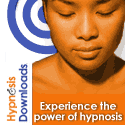Abdominal Migraines
Anyone who has ever had a migraine will say they do not just happen in the head. The headache is usually the worst and most painful part of a migraine, but there’s more. Most migraineurs (people who suffer from migraines) will talk about photosensitivity (sensitivity to light), phonosensitivity (sensitivity to sound), scent sensitivity, gastric pain, cramping, and vomiting.
Sometimes the abdominal symptoms show up without the other typical migraine symptoms. When they do, a patient is said to be experiencing an abdominal migraine. An abdominal migraine is pain, usually varying from mild to medium, in the abdomen. The pain is either along the midline or unspecified and is frequently accompanied by abdominal tenderness, cramp-like spasms, bloating, vomiting, and loss of appetite.
Since abdomen pain can be caused by a wide variety of conditions other causes need to be ruled out before a diagnosis can be made. In a classic abdominal migraine, no gastric cause for the pain can be identified. Migraineurs need to let their doctors know about their migraines when they experience unspecified abdominal pain so that the doctor knows abdominal migraine may be a possibility.
Abdominal migraines are most common in children. Children who experience abdominal migraines frequently grow up to be migraineurs. While abdominal migraine is not unheard of in adults, it is rare. Like most other types of migraine, it is also more common in females than in males.
While the exact cause of abdominal migraines is unknown, it is highly likely to be related to serotonin deficiency. Serotonin deficiency has been linked in several studies to migraines, and 90% of the body’s serotonin is produced in the gastric system. Serotonin deficiency causes cascading waves of nerve reaction in the brain when triggering a migraine and a similar process may be in effect in the abdomen.
Acupressure and Migraines
Acupressure is a completely non-invasive treatment option that has a high success rate among migraineurs (people who suffer from migraine headaches). It has a proven track record as a successful pain abatement technique. Acupressure is also efficacious in reducing both the frequency and intensity of migraine attacks.
In Traditional Chinese Medicine, there are over 800 vital energy points in the human body. These points lie along meridians that run throughout a person’s body. Chi, or life energy, flows along the meridians and through the energy points in healthy people. Chi that is blocked or overabundant near particular energy points causes illness and pain.
Acupressure massage applies pressure to these energy points in order to release chi and stimulate the body’s own healing mechanisms. The energy points are massaged with the fingers, thumb, or occasional blunt object with medium pressure in a circular pattern.
The simplest acupressure a migraineur can learn is an all-over head massage. This technique just requires the practitioner to massage the scalp as though they were washing their hair. Sit with the elbows resting on a table to prevent arm strain and the head resting lightly in the hands to perform head and neck acupressure.
Moderate pressure applied to the GB20 points offers the best relief for migraine pain. They are on either side of the neck, approximately one inch to each side of the spinal column just below where the skull and neck muscles connect. GB20 also goes by the more romantic-sounding Chinese name “The Gates of Consciousness”.
Migraineurs seeking to relieve their headache and neck pain should practice deep breathing while using the thumbs of both hands to press firmly on the GB20 points for one to two minutes. If this is painful at first, home practitioners can start out by pressing and releasing the points in five to fifteen second intervals.
Get information to stop migraine pain Also read about the condition on Tonsil Stones and a natural cure for tonsil stones
Get competent hints for lose 10 pounds – welcome to your personal knowledge pack.



